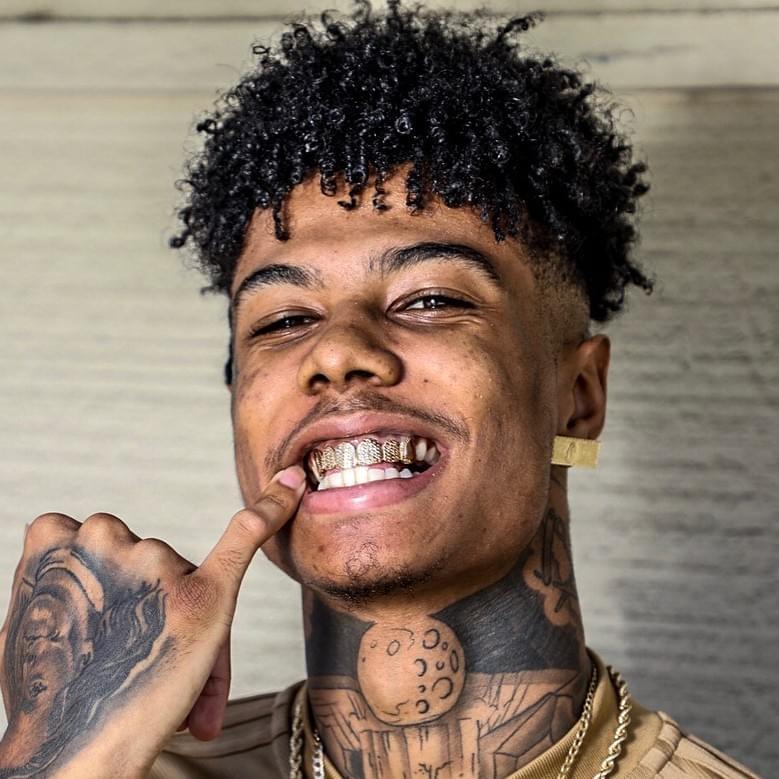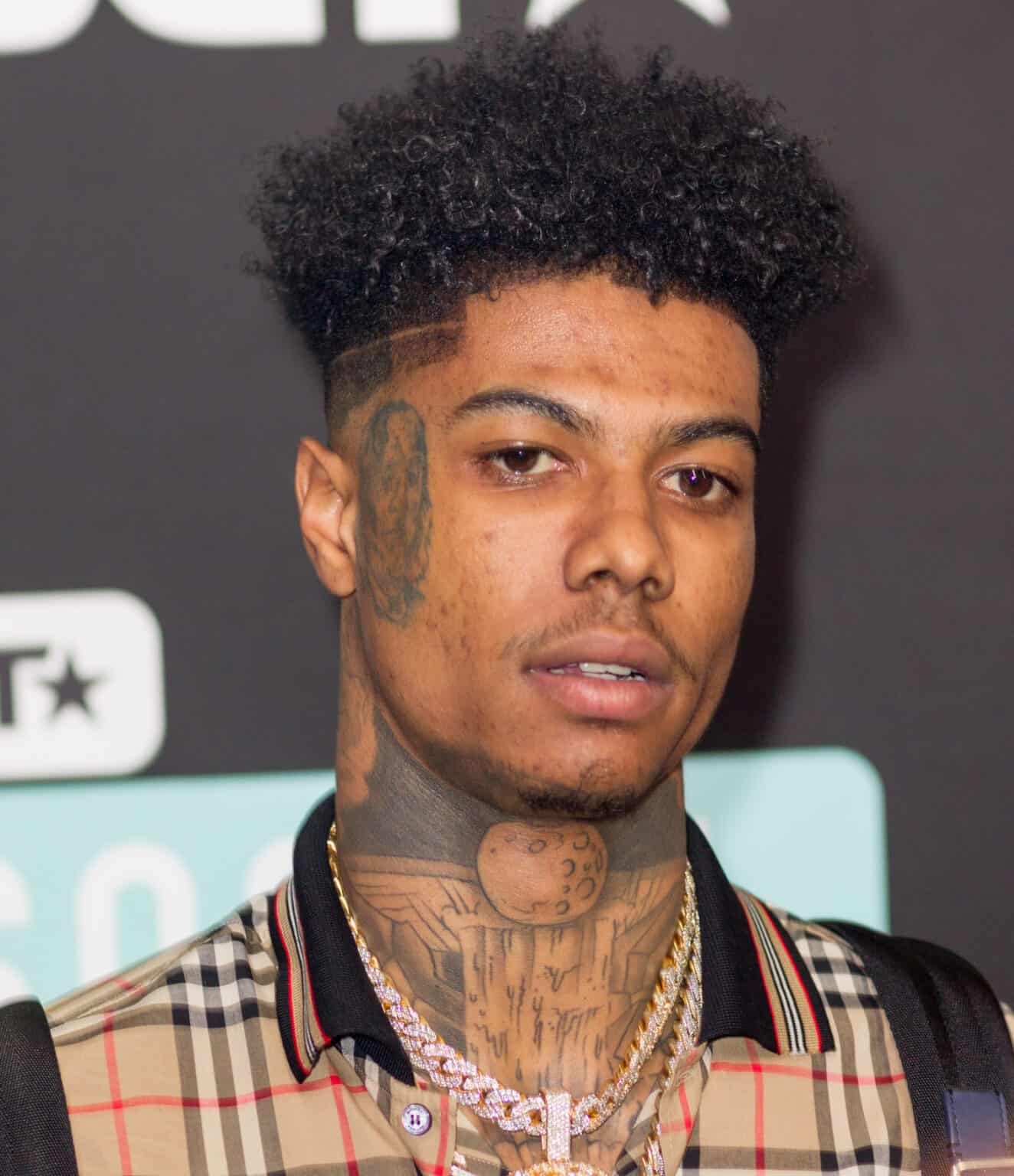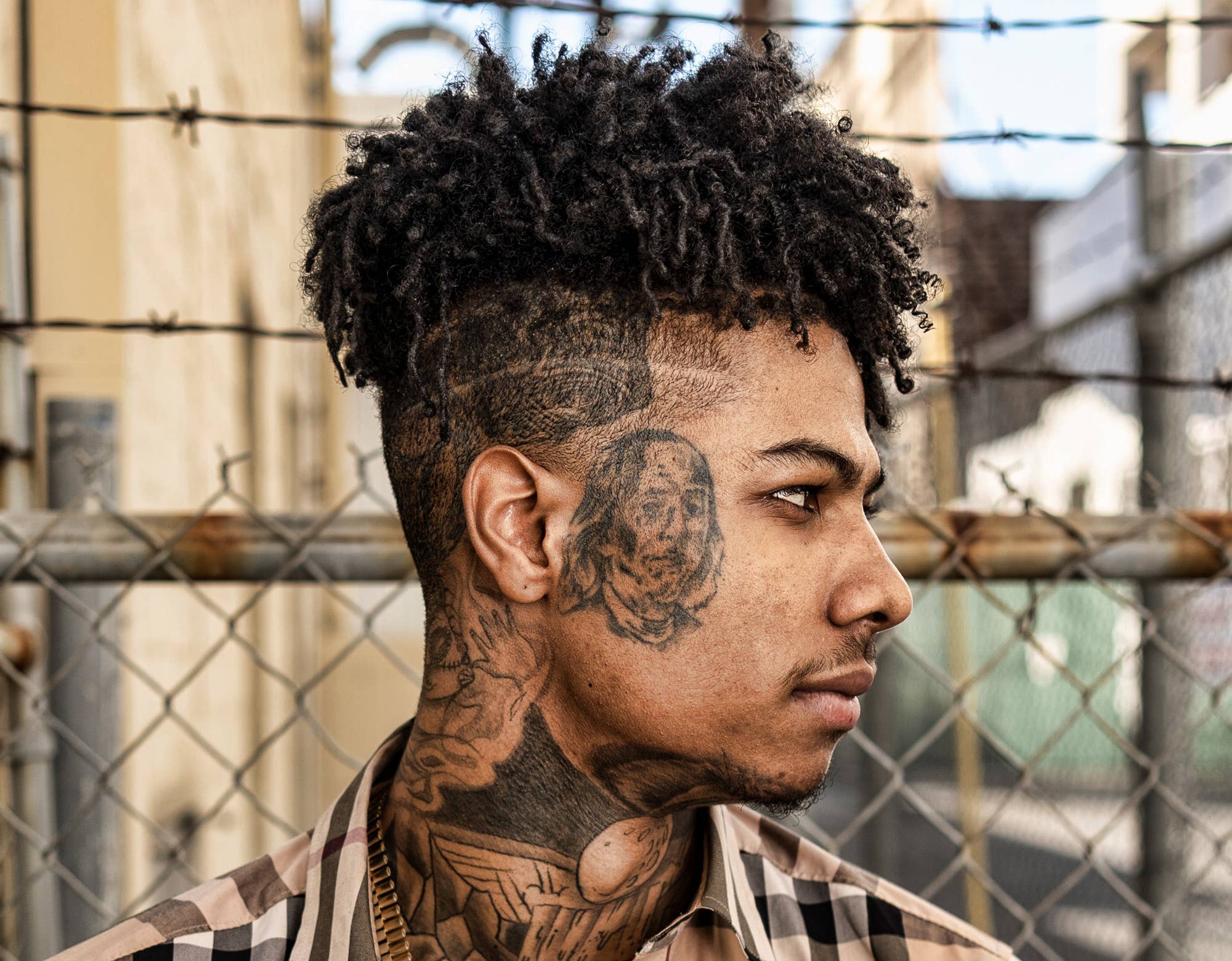What are the aesthetic and cultural implications of this specific shade of hair? A deep dive into a trending hair color.
This vibrant, often intense, shade of blue hair represents a bold and distinct aesthetic choice. It typically involves dyeing the hair a shade of blue, ranging from a pastel, almost light sky, hue to a deep, almost indigo, blue. Examples of this trend appear frequently in popular culture, social media, and personal expressions of style.
The significance of this hair color choice lies in its ability to make a strong, almost instantly recognizable, visual statement. Its impact on self-expression and personal branding is evident, particularly in contemporary social contexts where visual identity plays a prominent role. The prevalence of this color within fashion circles and popular culture suggests a strong, enduring appeal. The cultural importance is multifaceted, possibly representing a desire to stand out, to challenge conventional norms, or to embrace individuality.
| Celebrity/Influencer | Notable Associations/Style |
|---|---|
| (Name of relevant celebrity 1) | (Brief description of their association with the color, e.g., consistent use in public appearances) |
| (Name of relevant celebrity 2) | (Brief description of their association with the color, e.g., notable role in popularizing this style) |
Further exploration into this trend can investigate the historical context of blue hair dye as a style choice, the materials and processes involved in achieving these hues, and the cultural connotations associated with blue as a color. This approach will provide a deeper understanding of the choices driving this trend and its impact on the larger cultural landscape.
Blueface Hair
Understanding the multifaceted nature of "blueface hair" requires examining its various facets. This exploration delves into essential aspects, encompassing visual aesthetics, cultural context, and societal impact.
- Aesthetics
- Color intensity
- Self-expression
- Social media influence
- Trend evolution
- Cultural association
The visual aspect of "blueface hair" encompasses its aesthetic appeal, driven by color intensity and vibrancy. Self-expression is a core driver. Social media has significantly amplified the trend. The evolution of the style through time reveals changes in cultural preferences and societal acceptance. The color's association with rebellion or artistry adds another layer to its meaning. Considering all these factors reveals the multifaceted nature of this style choice.
1. Aesthetics
The aesthetic choices surrounding blue-tinted hair, often termed "blueface hair," are a complex interplay of visual appeal and personal expression. This exploration examines key facets of how the appearance impacts perception and cultural significance.
- Color Intensity and Variation
The range of blue shades, from pastel to deep indigo, significantly alters the overall aesthetic impact. Variations in tone and vibrancy create distinct visual profiles, each with a unique effect on the individual's appearance. The intensity of the blue influences how it interacts with other features, highlighting or contrasting different elements of the person's physicality.
- Texture and Style Integration
The aesthetic extends beyond color. How the blue hair is styledstraight, wavy, or texturedplays a vital role in the overall look. The style choices, coupled with the color, create a specific visual language that communicates a particular aesthetic identity. The combination of color and style impacts the wearer's perceived personality and sophistication.
- Complementary Features and Contrast
The effect of the hair color depends on its interaction with other features. Skin tone, eye color, and facial structure can either enhance or contrast with the blue hue, altering the final aesthetic. These interactions are crucial to understanding the visual impact of the hair color.
- Cultural and Subcultural Influence
Cultural perceptions and subcultural trends shape the aesthetic value associated with blue hair. Societal interpretations of this style evolve over time, creating a nuanced understanding of its meaning. Awareness of these underlying factors provides crucial context.
Ultimately, the aesthetics of "blueface hair" are not merely about color but a comprehensive statement. The interplay of color intensity, style choices, complementary features, and cultural influences combine to create a complex visual identity. These aspects must be considered together to fully appreciate the aesthetic impact of this evolving trend.
2. Color Intensity
The intensity of the blue hue in "blueface hair" significantly impacts the overall aesthetic and perceived meaning. Variations in shade and saturation profoundly influence how this style is interpreted. This exploration examines the key roles of color intensity in shaping the visual impact and cultural significance of this trend.
- Saturation and Visual Impact
The degree of saturation directly influences the boldness and vibrancy of the hair color. Highly saturated blues, such as vibrant electric blue, create a striking and attention-grabbing effect. Conversely, desaturated blues, approaching pastel shades, project a more subtle and understated appearance. Different levels of saturation communicate distinct aesthetic choices. These varying levels of saturation create a wide spectrum of appearances.
- Contrast with Skin Tone
The effectiveness of the blue hue depends heavily on its contrast with the wearer's skin tone. A deep blue may appear bold against fair skin, whereas a lighter, pastel blue might complement darker skin tones. The contrast dictates whether the color enhances or detracts from the overall appearance, demanding a thoughtful consideration of the individual's complexion.
- Cultural Connotations and Perceptions
Different shades of blue evoke various cultural connotations. A vibrant blue may be associated with boldness and rebellion, whereas a softer, pastel blue might suggest a more delicate or artistic aesthetic. These perceptions are influenced by cultural contexts, and understanding this association is crucial in interpreting the intention behind the style choice.
- Style and Subculture Correlation
The intensity of the blue shade often aligns with specific styles and subcultures. Bold, highly saturated blues might associate with alternative or punk aesthetics, while paler shades might align with a more artistic or contemporary aesthetic. Recognizing these potential correlations enhances comprehension of the broader cultural impact of the chosen style.
In conclusion, the color intensity of "blueface hair" is a crucial element in understanding the complete aesthetic impact and symbolic meaning behind the style. From the visual strikingness of high saturation to the subtle implications of softer shades, the chosen intensity directly influences the overall expression, reflecting the wearer's desired image and cultural associations.
3. Self-expression
The phenomenon of "blueface hair" frequently serves as a potent vehicle for self-expression. This deliberate choice of hair color transcends a mere aesthetic decision; it often becomes a powerful statement of individual identity, fostering a unique expression of personal values and preferences. This exploration examines the multifaceted relationship between this hair trend and the act of self-expression.
- Visual Communication
The vibrant hue of blue hair functions as a visible declaration. A bold, striking blue shade stands in contrast to more conventional hair colors, immediately drawing attention and conveying a sense of individuality. This visual statement, in turn, communicates aspects of personality and preferences not readily apparent through verbal or written means. The choice of a specific blue shade within the broader spectrum further enhances the specificity of self-expression. Real-world examples range from artists or musicians who adopt the hair color to align with artistic expressions, to individuals embracing the trend as a form of creative self-identification.
- Challenging Norms
Choosing to dye one's hair a non-traditional color can act as a challenge to societal norms. "Blueface hair," with its pronounced and often unusual nature, potentially signals a rejection of conventional expectations and a desire to embrace individuality. This act of defiance through fashion choices often empowers individuals seeking to define their identity outside pre-defined parameters. The choice of hair color is directly tied to the desire to differentiate from the mainstream or to embody a specific subgroup or subculture.
- Personal Identity and Values
The decision to adopt "blueface hair" can reflect deeper personal values and identities. For example, an individual might link the color blue with particular emotions, beliefs, or experiences. The style choice may serve as a personal emblem, representing a specific worldview or personal value system. Choosing this style as a form of self-expression illustrates a conscious, deliberate alignment between appearance and internal identity.
- Social Commentary through Style
The adoption of a particular hair color, including "blueface hair," can act as a form of social commentary. This form of visual communication can be subtle or overt, often depending on the associated cultural or subcultural meanings of the color. The choice may be an explicit statement against societal structures or an attempt to create a sense of belonging to a particular social or artistic group. Specific historical or social contexts may enhance the intended message in this form of visual communication.
In summary, "blueface hair" acts as a potent tool for self-expression. The choice of this hair color is not simply about aesthetics but a nuanced way to communicate individuality, challenge norms, express personal values, and potentially participate in social commentary through fashion. The various facets of self-expression interwoven within the choice of "blueface hair" highlight the trend's impact beyond its superficial appeal.
4. Social media influence
Social media platforms have profoundly impacted the visibility and adoption of "blueface hair." The proliferation of images and videos showcasing this trend across various platforms has significantly influenced its popularity. Visual trends, once reliant on limited channels like fashion magazines or music videos, now find rapid dissemination through social media. This creates a dynamic feedback loop: positive reception on social media can accelerate the trend's adoption, while negative responses might stifle it.
The role of influencers and celebrities in amplifying "blueface hair" as a trend is undeniable. Public figures posting images and videos with this hair color not only expose it to a broad audience but also lend it a sense of validation and desirability. The perceived popularity generated by social media significantly influences consumer behavior and purchasing decisions, including the products and services needed to achieve the aesthetic. The viral nature of social media fosters quick adoption of trends; content about a particular style being shown, used and promoted across platforms will drive demand and popularity. This can be seen in how specific hair color trendslike "blueface hair"are amplified through online communities, creating a snowball effect.
Understanding the link between social media and "blueface hair" is crucial for businesses aiming to capitalize on this trend. Recognizing the power of online visibility and the potential for viral dissemination allows for strategic marketing campaigns. Companies can tailor their products and messaging to align with the social media context, maximizing their reach and impact. Furthermore, this understanding is key for individuals navigating their own self-expression and choices, highlighting how the online community influences personal style decisions. A nuanced understanding of this impact offers a clearer picture of how trends emerge, spread, and ultimately shape societal aesthetics.
5. Trend Evolution
The evolution of "blueface hair" as a trend reflects broader shifts in societal aesthetics and self-expression. This dynamic evolution is influenced by various interconnected factors, including historical context, cultural shifts, and the emergence of new platforms for disseminating trends. Understanding this evolution provides valuable insights into the interplay of individual choices and broader social forces.
The adoption of blue hair color, while seemingly a simple aesthetic choice, is deeply embedded within a larger trend cycle. Early appearances might have been isolated instances of creative expression, perhaps associated with specific subcultures. However, the visibility and accessibility facilitated by social media have dramatically accelerated the trend's spread. Real-world examples include celebrities and influential figures adopting the style, which then leads to increased mainstream exposure and copycat behavior. The trend's visibility also often depends on the aesthetic interpretations presented, creating cycles of acceptance and rejection as different forms of the style take center stage. The interplay between aesthetic preference and social media visibility is crucial in understanding the trend's trajectory. The rapid rise and potential fall of the trend underscore the dynamic and often fleeting nature of fashion trends.
Analysis of trend evolution regarding "blueface hair" reveals that understanding its trajectory offers practical applications across various fields. Fashion designers, for example, can leverage this knowledge to predict future styles and incorporate emerging aesthetics into their collections. Businesses can anticipate consumer demand for products and services related to achieving or maintaining this look, adapting accordingly. Furthermore, a deeper understanding of the trend's lifecycleits rise, peak, and potential declineis valuable in predicting and interpreting shifts in consumer preferences and wider cultural trends. This knowledge is especially helpful for companies that need to anticipate evolving tastes within their market and adjust their strategies accordingly.
6. Cultural Association
The association of "blueface hair" with specific cultural values, beliefs, and subcultures is a complex and evolving phenomenon. This color choice, within a broader cultural context, often signifies certain meanings, extending beyond a mere aesthetic choice. The significance of the color blue, its diverse interpretations across cultures, and the specific contexts surrounding its use in hair coloring are pivotal factors in understanding the broader cultural impact of this trend. Examples include cultural expressions of rebellion or individuality, the association of blue with artistic or creative expression, or potentially, symbolic links to specific subcultural groups.
The connection between cultural association and "blueface hair" can be observed in the ways this style appears in different communities and across various social media platforms. For instance, the popularity of a specific shade of blue within a particular subculture suggests an underlying cultural meaning attached to this color choice. Conversely, the lack of association within another culture highlights the nuanced and often contextual nature of such links. Understanding these diverse contexts necessitates careful examination of local social norms and the historical connotations of the color blue in different cultural settings. Direct correlations between specific shades and particular cultural subgroups need further, dedicated research. Further study could explore the influence of social media in shaping and reinforcing these cultural associations.
Recognizing the importance of cultural association in understanding "blueface hair" is crucial for several reasons. Businesses targeting this market segment can use this knowledge to tailor their marketing strategies, enabling them to appeal more effectively to specific cultural groups. Furthermore, a nuanced understanding of these cultural associations allows for more sensitive and appropriate engagement in conversations or content surrounding the trend, avoiding unintentional offense or misrepresentation. Ultimately, acknowledging the diverse and potentially complex cultural associations connected to "blueface hair" is key to fostering a more inclusive and culturally sensitive approach in various fields, including fashion, art, and social media engagement.
Frequently Asked Questions
This section addresses common inquiries regarding the trend of blue-tinted hair, often referred to as "blueface hair." Questions cover various aspects, including the styling process, cultural implications, and potential risks associated with this choice.
Question 1: What are the different types of blue hair dyes available?
Various blue hair dye formulations exist, ranging from semi-permanent to permanent options. Selection depends on desired longevity and the original hair color. Semi-permanent dyes offer a vibrant, temporary shade, while permanent dyes offer a more enduring result but can affect the hair's structure. Additional considerations include specific color nuancesfrom pastel blues to deep, saturated indigo tonesand the availability of specialized, professional-grade dyes.
Question 2: How long does blue hair dye typically last?
The longevity of blue hair dye varies based on the type of dye used and the hair's inherent characteristics. Semi-permanent options typically fade after a few washes, whereas permanent dyes may last several weeks or even months before needing touch-ups. Proper aftercare practices, including maintaining a consistent hair care routine, can impact the dye's lifespan. Factors include the hair's porosity and frequency of washing.
Question 3: What are the potential risks associated with dyeing hair blue?
Hair dyeing, including blue, can potentially cause damage if not handled appropriately. Damage may range from dryness and breakage to color fading or uneven application. Individuals with sensitive scalps should use caution and consider consulting professionals. Allergic reactions to certain dye components may also occur. Strict adherence to product instructions and professional guidance are advisable.
Question 4: What is the cultural significance of dyeing hair blue?
The cultural significance of blue hair, as with any non-traditional hair color, is multifaceted and varies across communities and subcultures. It may symbolize rebellion, self-expression, or affiliation with specific artistic or aesthetic groups. The meaning is highly contextual and depends on the individual's intentions and the surrounding cultural norms.
Question 5: How can I maintain my blue hair color?
Maintaining blue hair color involves adopting a consistent hair care routine tailored to this specific color. Regular use of color-safe shampoos and conditioners and avoiding harsh treatments or excessive heat styling can help preserve the vibrant shade. Using color-depositing hair masks or treatments can occasionally refresh the color intensity.
In conclusion, "blueface hair" represents a multifaceted trend with aesthetic, cultural, and practical considerations. Choosing this style involves awareness of available options, potential risks, and appropriate maintenance practices. Seeking professional guidance and using caution can ensure a positive experience with this trend.
Next, we will explore the process of achieving the desired blue hair color, from initial preparation to post-dye care.
Conclusion
The exploration of "blueface hair" reveals a complex interplay of aesthetic choices, cultural associations, and social influences. The vibrant hue serves as a potent vehicle for self-expression, often challenging conventional norms and communicating a distinct identity. Social media's role in accelerating and disseminating this trend is undeniable, highlighting the interconnectedness of online and offline expression. Color intensity, styling choices, and potential cultural interpretations all contribute to the multifaceted nature of "blueface hair." The trend's evolution, from isolated instances to mainstream visibility, reflects broader shifts in societal aesthetics and the growing significance of personal style in conveying identity. Understanding the potential risks associated with hair dyeing, alongside appropriate maintenance practices, is crucial for a safe and positive experience.
Ultimately, "blueface hair" represents a fascinating case study in the dynamic interplay between individual expression, cultural norms, and technological advancements. Further research can explore specific cultural interpretations, examine the long-term impact of the trend, and analyze the evolving relationships between self-perception, social media, and personal style. This multifaceted trend continues to evolve, reflecting broader societal changes and the enduring human desire for self-expression.


